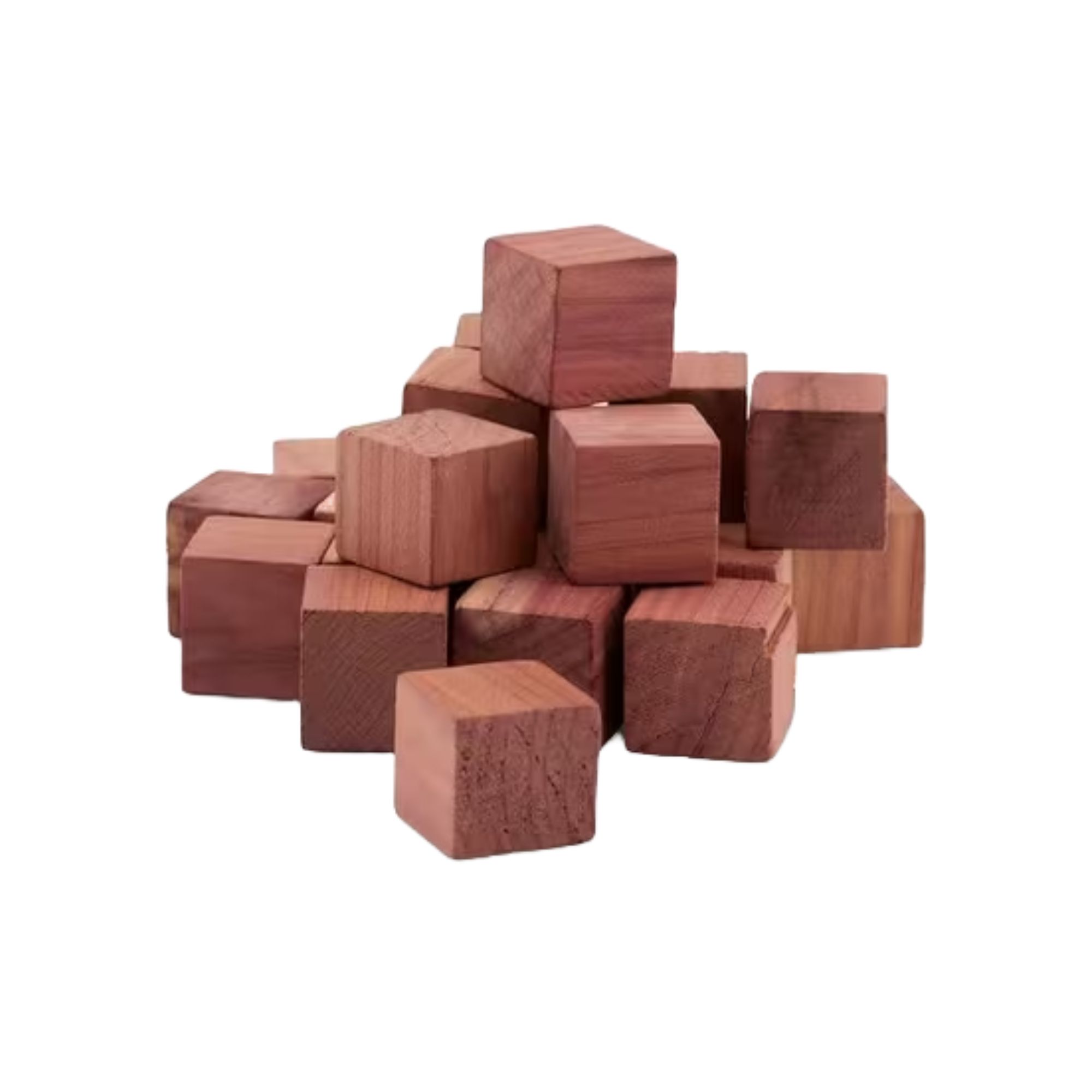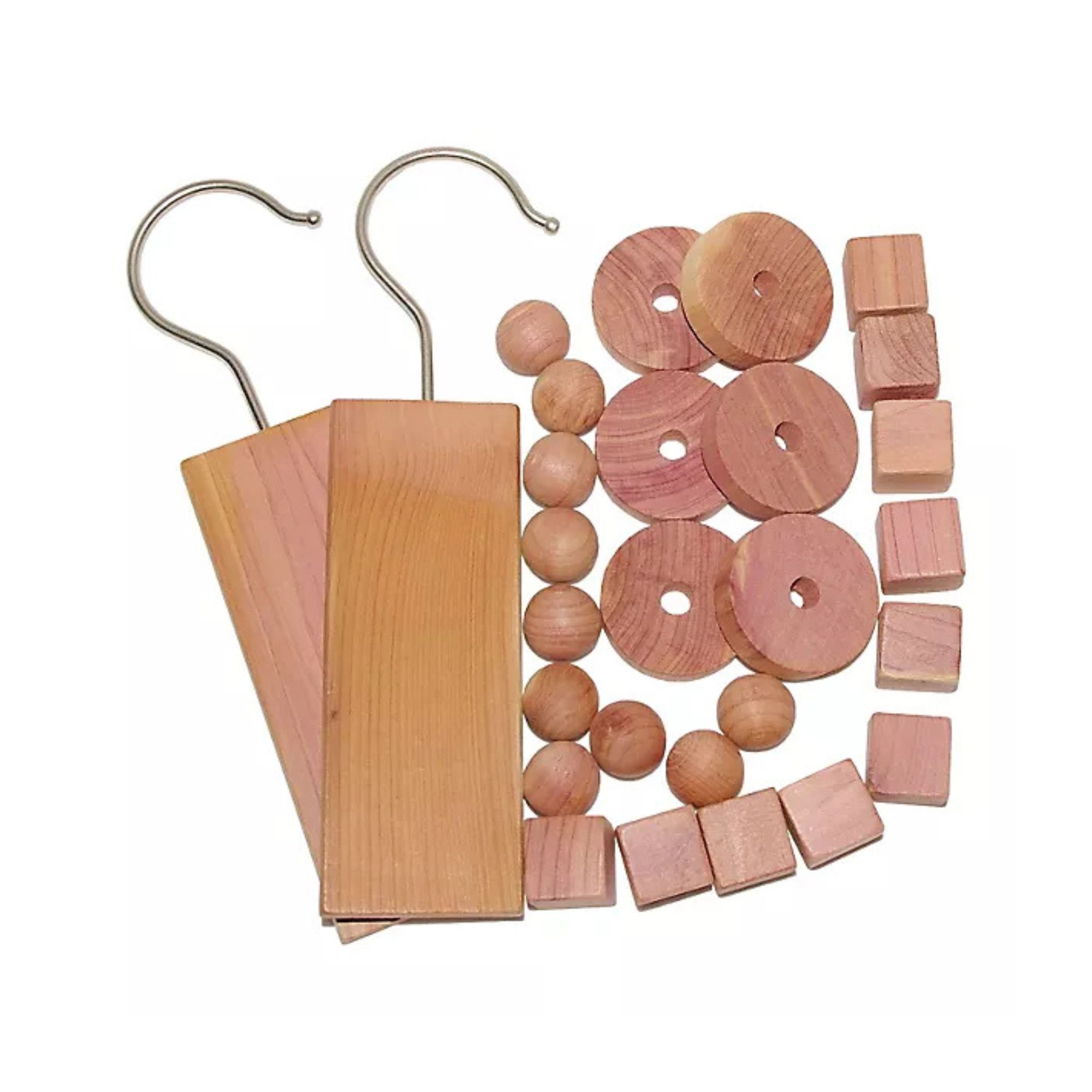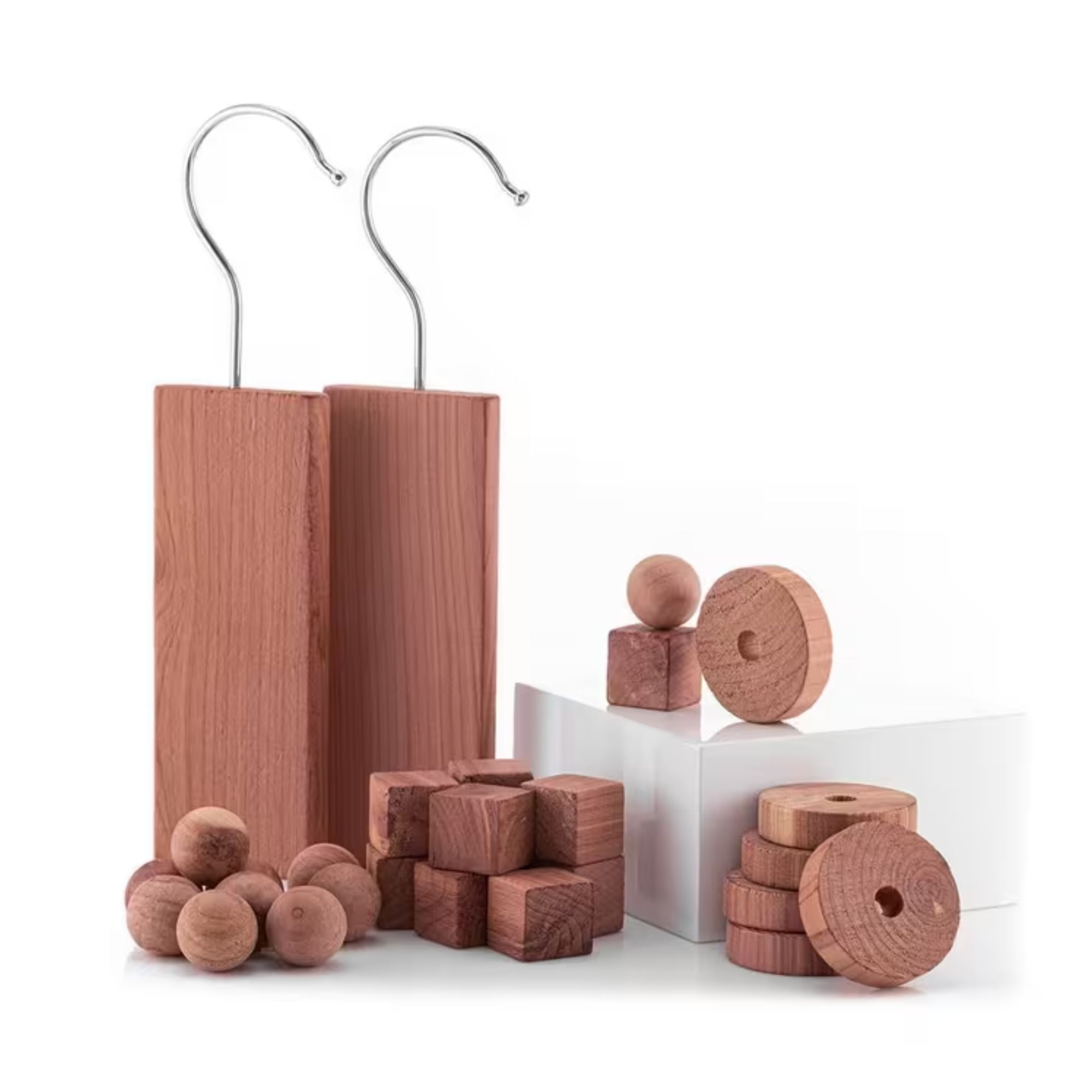Experts say this one product should get rid of clothes moths once and for all - and you can buy a pack of 24 for just £6.50
The power of cedar wood is unmatched


Holes in your clothes? Visible webs in your wardrobe? You’re not alone. Clothes moths are a common problem in homes across the UK, and the key is to get rid of clothes moths as soon as possible to stop them from laying their eggs - and cedar wood could be the solution.
Although there are many ways to get rid of moths in your home, clothes moths are incredibly sneaky. You might have perfected your wardrobe idea, but they’ll find a way to get into your for an all-you-can-eat buffet of cotton, cashmere, wool, and other fabrics. In fact, they might even start eating your carpets and rugs. As such, it’s incredibly important to find a solution to get rid of clothes moths quickly and keep them away.
Of all the scents that clothes moths hate, cedar is generally considered the most effective at deterring them from your beloved clothes. And while you can buy a cedar candle or pure cedar oil, using cedar wood to get rid of clothes moths is much easier - and the wood itself is way more long-lasting.
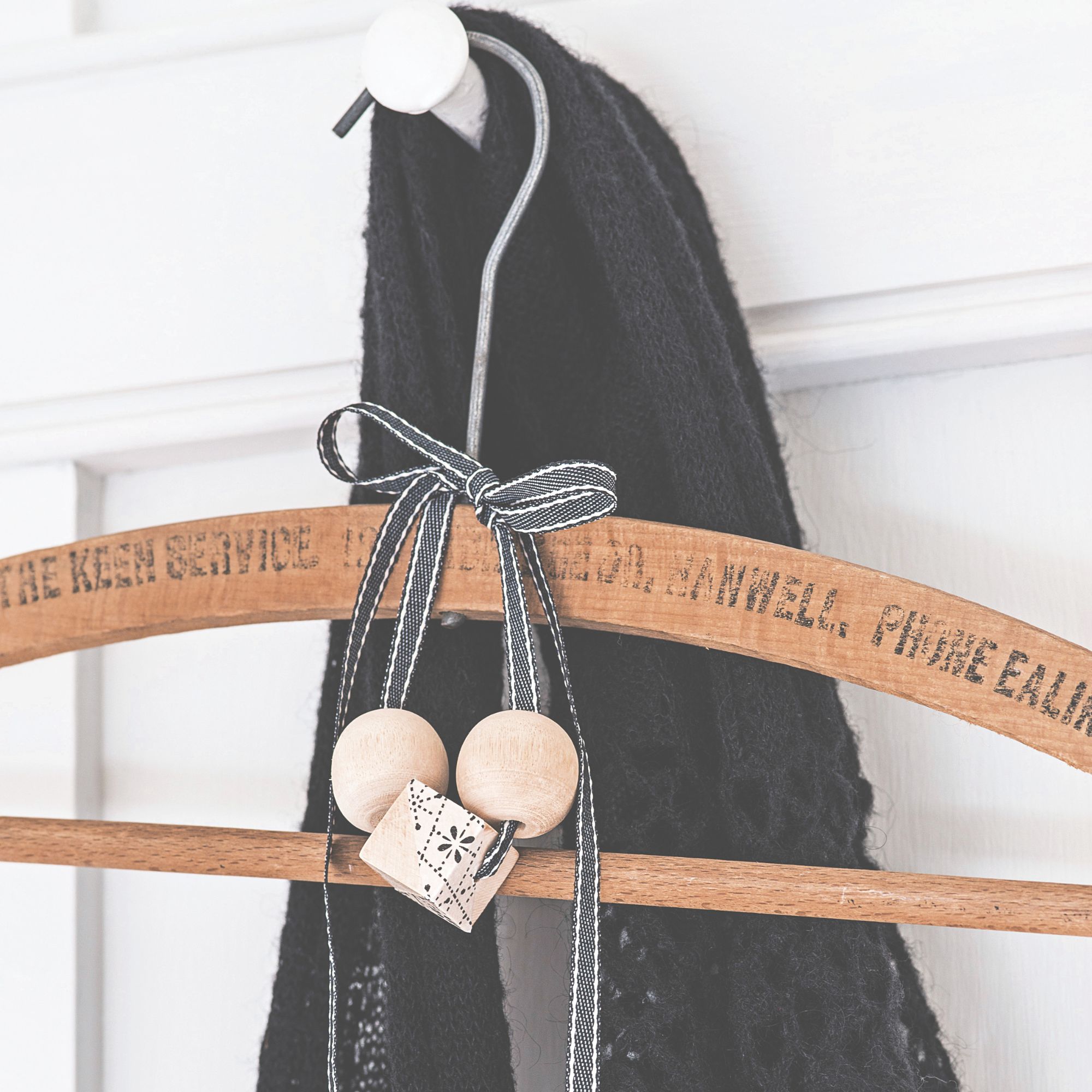
How cedar wood can get rid of clothes moths
Many people associate cedar with garden screening ideas and old, vintage furniture. And while there’s no denying that this softwood is extremely beautiful, what some don’t realise is that it also offers impressive pest-repelling properties.
Niko Dafkos, Co-founder of Earl of East, says, ‘Cedar acts as a natural deterrent for moths because its scent disrupts their ability to locate and feed on materials like wool and silk.’
Cedar wood offers a beautiful scent, and it’s this scent that disrupts the natural instinct of a clothes moth. This means they steer clear of your wardrobes - especially useful if many of your clothes are made from natural materials and fibres. As a result, they’ll also avoid laying eggs on or near your clothes, meaning you can break the reproductive cycle that is extremely hard to control.
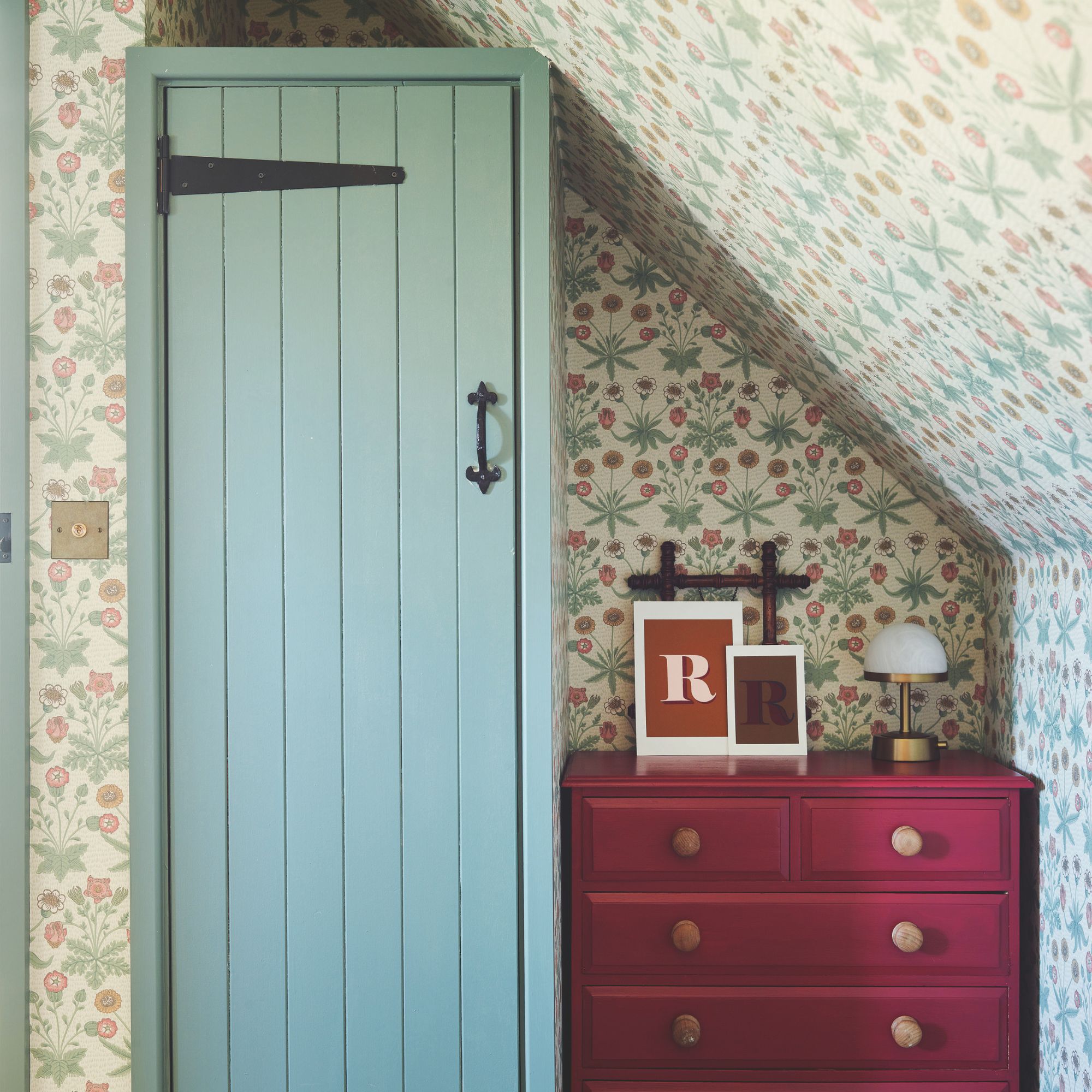
Tim Warren, a DIY expert from Adkwik, explains further, ‘The scent of the oils within cedar wood does not actually deter the moths, but they instead camouflage the scent of keratin, the usual target of moths.’
Sign up to our newsletter for style inspiration, real homes, project and garden advice and shopping know-how
Keratin makes up a huge part of materials such as fur, wool, cashmere, silk, and viscose, but it’s important to note that keratin is also found in many cleaning products and laundry detergent - so it’s no wonder that clothes moths are attracted to many homes across the UK.
Thankfully, cedar wood can help. And as Tim says, ‘It is a much safer repellent to use than mothballs, as these used to contain chemicals that were harmful when inhaled.’
However, cedar wood won’t help if eggs have already been laid on your clothes. Walter Murphy at PriceYourJob.co.uk explains, ‘If moth eggs have already been laid on your clothes or soft furnishings, the cedar won’t stop the larvae from wreaking havoc. It can only help to prevent more eggs from being laid on those fabrics. Most people don’t realise this and just assume that cedar doesn’t make any difference.’
In that instance, either washing your clothes or steaming them will kill the eggs.
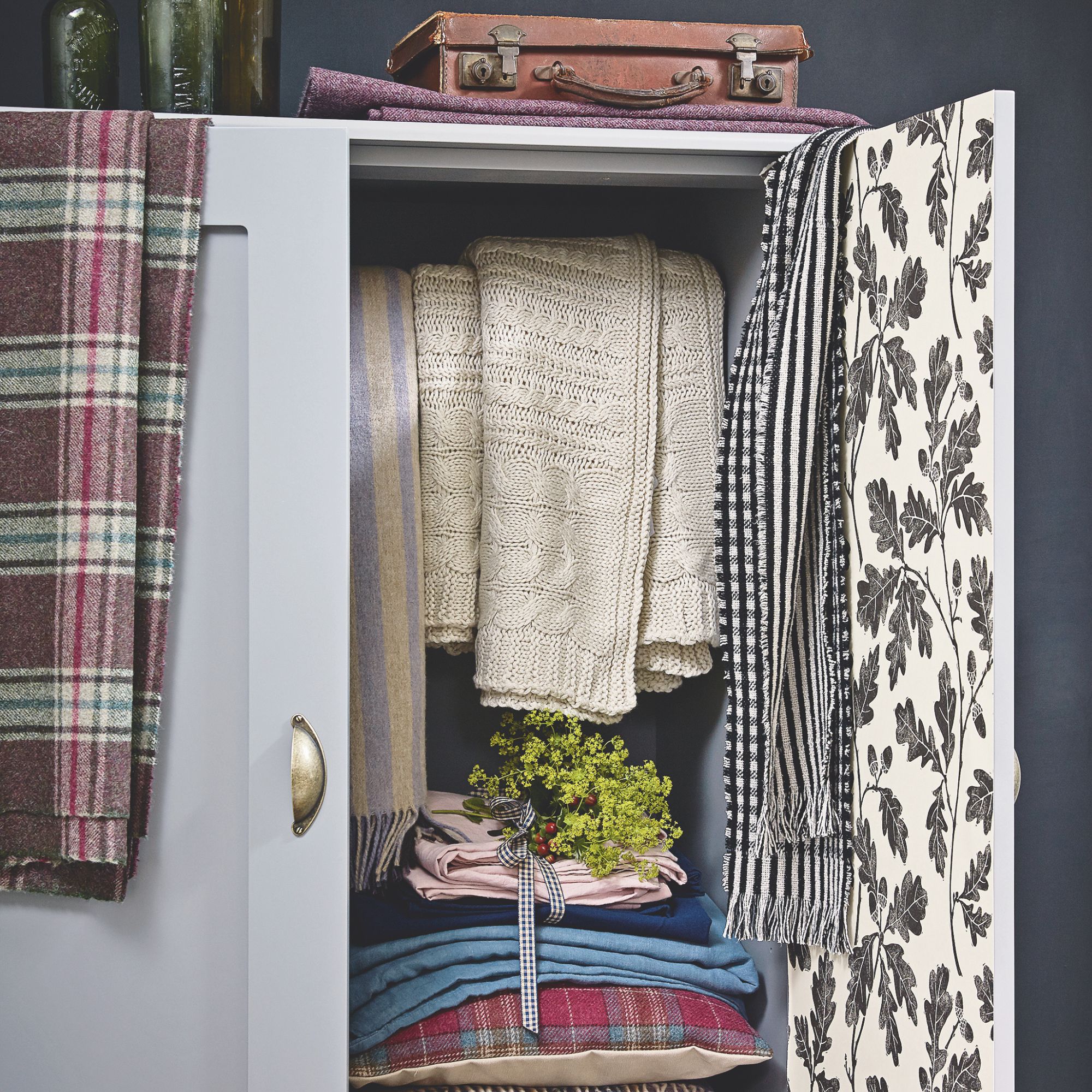
How to use cedar wood around the home
Cedar wood is a tried-and-tested way to get rid of clothes moths, and there are countless products out there that can help. However, using wood itself is much more effective than using oils or candles.
This wood also comes in various different forms - from balls to blocks, rings and hanging bars that can be hung right next to your clothes. If you struggle primarily with clothes moths in your wardrobe, placing these both up high and down low in your wardrobe is key. For ultimate protection, you can also place them elsewhere around your home too.
The reviews of these products are impressive, too. The John Lewis Cedar Moth Deterrent Blocks, Pack of 24 have been extremely well-received by happy customers. One person said, ‘The blocks are small and easy to place in those hard to reach places at the back of cupboard drawers. They work well.. I have bought these for myself and am now buying them for a friend who has had a lovely cashmere sweater ruined by a moth infestation.’
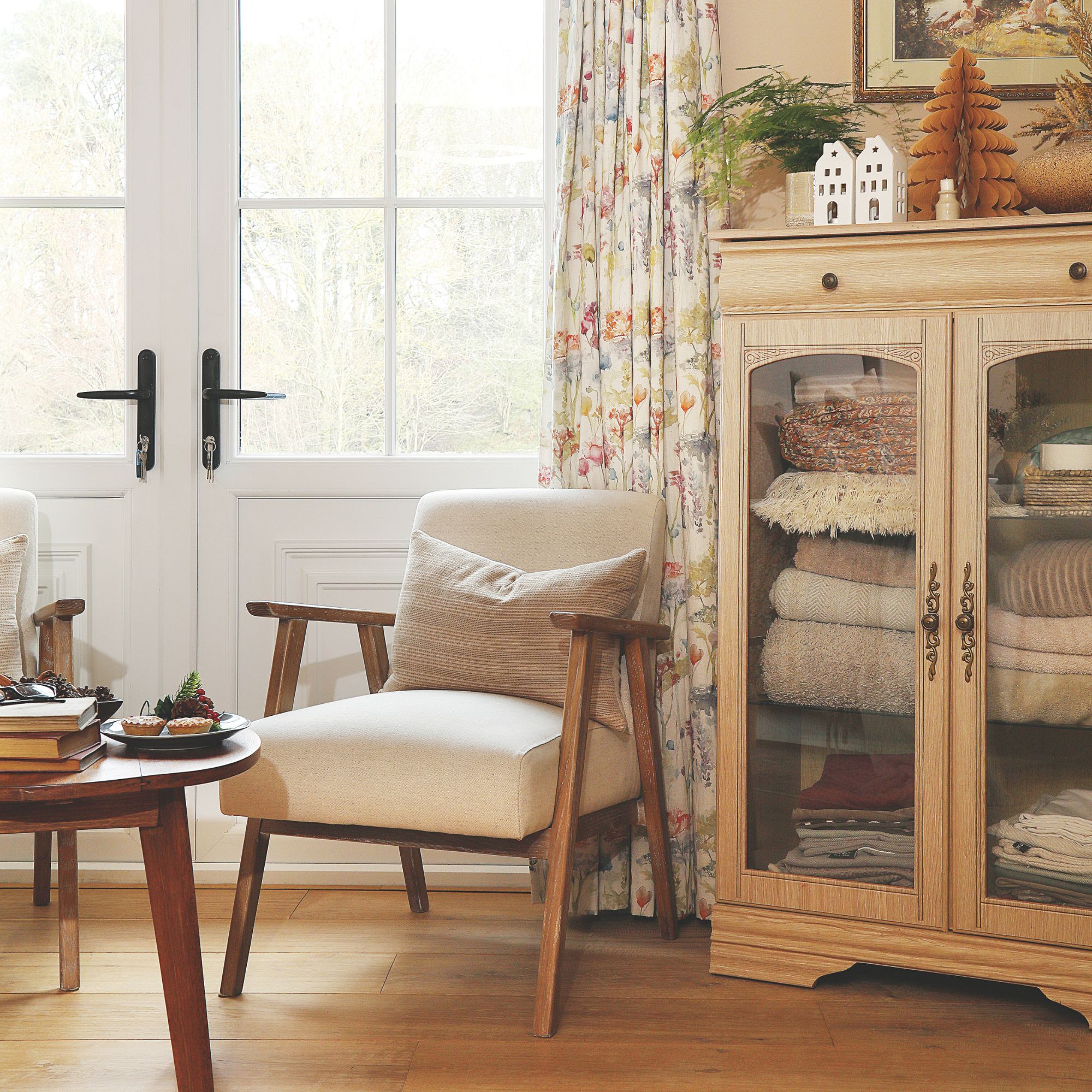
Another reviewer said, ‘I put these in my wardrobes and on the windowsills around my home and haven't seen a moth since.’
While you can leave these cedar wood blocks, balls, and hangers to their own devices (unlike oils and candles, which will need replacing), it’s important to note that they do require some maintenance occasionally - especially if you want to ensure the cedar wood keeps clothes moths at bay for years on end.
According to Lakeland, ‘To get the best results, lightly sand the surface of each item every 3 months to allow the aroma to keep being released and offer continuous protection.’
A small price to pay to ensure your clothing stays in one piece.
FAQs
Is lavender or cedar better for moths?
Although lavender is generally considered to be an effective clothes moth repellent, most experts would agree that cedar is better for those looking to get rid of clothes moths.
The smell of cedar is extremely long-lasting and stronger than the scent of lavender, which messes with the clothes moth’s senses - keeping them away from your clothes.
However, if you only have lavender at your disposal, you can also use this to get rid of clothes moths.
What are the first signs of clothes moths?
If you’re worried you have clothes moths, you should look out for the following signs and take action to get rid of clothes moths as soon as possible:
- Holes in your clothing.
- Silky webs on clothing or soft furnishings.
- Bare patches in carpets and rugs.
- Cream-coloured eggs on clothing.
If you've spotted any of these signs, using cedar wood to get rid of clothes moths seems like a no-brainer, right?

Lauren Bradbury has been the Content Editor for the House Manual section since January 2025 but worked with the team as a freelancer for a year and a half before that. She graduated with a Bachelor’s degree in English and Creative Writing from the University of Chichester in 2016. Then, she dipped her toe into the world of content writing, primarily focusing on home content. After years of agency work, she decided to take the plunge and become a full-time freelancer for online publications, including Real Homes and Ideal Home, before taking on this permanent role. Now, she spends her days searching for the best decluttering and cleaning hacks and creating handy how-to guides for homeowners and renters alike, as well as testing vacuums as part of her role as the Ideal Home Certified Expert in Training on Vacuums, having spent over 110 hours testing different vacuum models to date!
